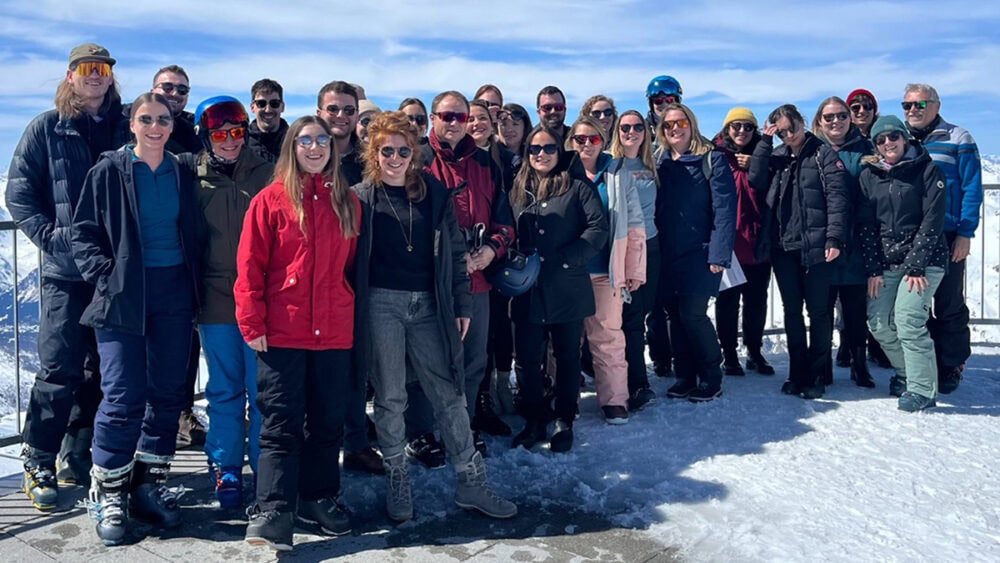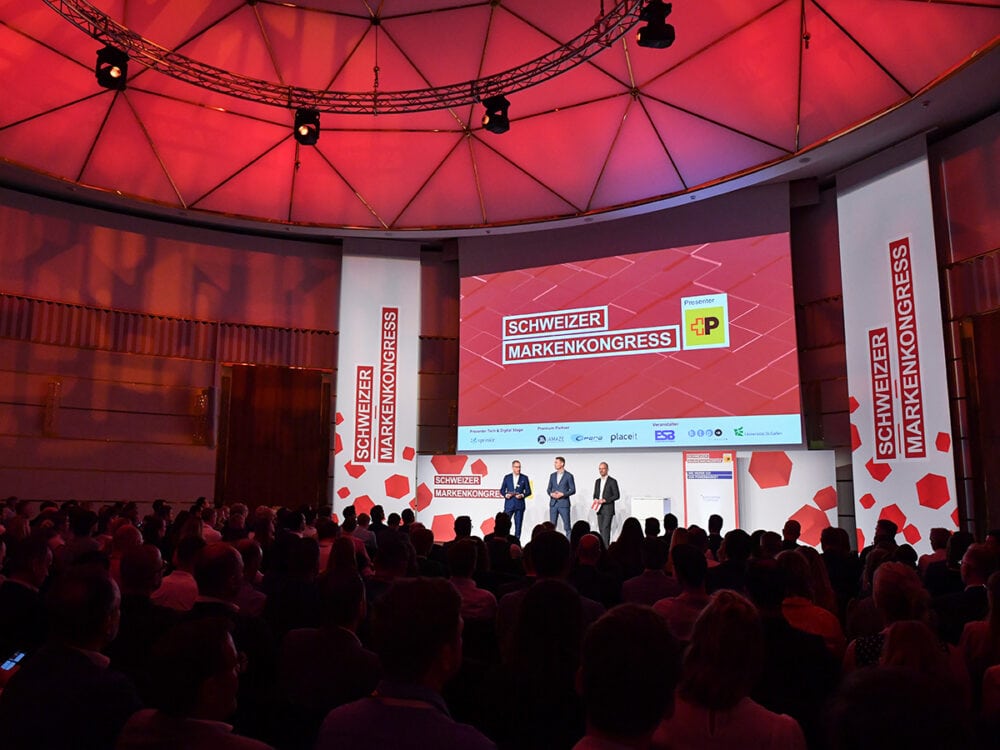Meetings and celebrations in the habitat of animals
TIERPARK On November 9, 2014, the Goldau Nature and Animal Park opened the "Grüne Gans". The restaurant has new rooms for small and large events, where you can dine and celebrate. Before or after, a walk past bears, wolves, owls and ducks is recommended. In the free-range zone of the zoo Goldau visitors meet various animals. This article [...]

In the free-range area of the Goldau Zoo, visitors meet a variety of animals. This article appeared in the January issue of "Meetings & Events". More exciting info from this industry is available here.The Goldau Zoo owes its origin to a natural disaster. In 1806, 40 million cubic meters of rock masses thundered down to the valley and formed a rocky landscape. For many years the area lay fallow and was unusable for agriculture. Until birds gradually settled and in 1925 Goldau residents worked to make the area habitable for animals and opened the park.The area continued to develop for some time, with animals such as birds, deer, and even monkeys coming and going. New facilities were added and smaller ancillary structures were built. The park became a habitat for animals - with the goal of preserving and developing this habitat in the long term and advocating for endangered European species. Especially since the opening of the communal enclosure for bear and wolf in 2009, the zoo has made a leap towards a modern zoo and is now the third largest in Switzerland.LocalThe park is shaped like an inverted Y. There are various tours from which visitors can choose. In "Bear and Wolf", for example, the path leads over heights and depths. The visitors also meet bison, cormorant, pig or donkey. The tour "Fish and Bird" leads around the pond and also shows raccoons, marmots and otters. The free-range zone is particularly popular, where walkers can meet and feed deer and mouflon. "It is important for us to bring visitors closer to native European animals and plants," explains Anna Baumann, director of the Goldau Nature and Animal Park. Everyone knows what a palm tree is, but few know about the non-invasive species. The center therefore focuses strongly on research and information and offers a wide range of educational programs. For example, 1,000 school classes and other groups visit the park each year to see the exhibits during a guided tour to the discovery stations with courses and workshops. "We count 600 group tours that we conduct each year," says the Schwyz native. These include, for example, "Wild in the Forest," in which visitors go on the trail of deer, wild cats and pigs. In the process, participants experience how these animals adapt to their habitat.

The meeting will be followed by the night tour of the park with its history and some nocturnal animals.On a voyage of discoveryAround 400,000 people visit the park every year. Contrary to what one might think, not only families with children are among the most frequent visitors. "Young people in particular seek out the park. They have their first date or their first kiss here and thus experience their first love adventure," says Anna Baumann. But young adults and older people also like to go to the park for a romantic walk. "They don't come because they are particularly close to nature or have a great love of animals, but because they want to experience something and can learn something new," says the certified animal keeper. Another reason is the added value of doing something before or after a meal together. This added value also attracts many companies to the park. All the more so since the "Green Goose" has been in place.Sustainability is importantAt the beginning of November 2014, the Goldau Nature and Animal Park opened the new "Grüne Gans" restaurant because the old one no longer met the requirements, but also to keep the park attractive. "It had to be harmoniously embedded in the existing landscape and sustainably designed, as well as meet all logistical requirements from the inside and outside," Baumann explains. Between the panorama square and the communal area for bear and wolf, the path leads down the slope in a hairpin bend. Coming from the square, the visitor sees an orchid meadow covering the roof of the restaurant. Then a wooden facade with large window fronts made of bird protection glass becomes visible. Outdoor seating and a generous playground surround the Y-shaped floor plan with views of the Bear and Wolf facility, the Rigi, the Rossberg and the Mythen. The background and storage rooms remain hidden in the hillside.

After the tour we will go to the "Grüne Gans" for a cozy dinner."Since we are very focused on sustainability, our entire heating, ventilation and air conditioning system has been upgraded to the latest technology. That means we heat with the exhaust air from our refrigeration units. In addition, the entire restaurant was equipped with LED lamps," the director describes further.Days next to bear and wolfWith its 400 outdoor and just as many indoor seats, the "Grüne Gans" not only invites guests to enjoy cozy coffee, cake and traditional Swiss dishes, but also offers enough space for conferences. "With the 'Grüne Gans', we have finally obtained the necessary infrastructure to also host large events," explains Baumann. In addition to weddings and banquets, seminars and other corporate events for up to 400 people are also possible. In total, the "Grüne Gans" counts three halls and a terrace. "Very nice is the feather room, which was actually decorated with feathers," Baumann describes the room.For meetings, organizers are free to choose how their event will turn out. "Whether they want to participate in a workshop, a guided tour or just walk through the park is up to each person," Baumann explains. But the majority, he says, opt for a guided tour. She is not the only one who is particularly taken with the night tour.When the owls are awake"Since companies work during the day or have meetings at our facility, it's an obvious option for them to choose," Baumann said. Lanterns are distributed before the tour. Although the park has an outdoor lighting system, it is never turned on so participants can fully engage in the tour. "The leaders have a flashlight to better illuminate the appropriate animals," the director explains. She adds that the owl area is especially busy, as they are nocturnal. During the tour, the history of the park is told, with its goals and plans, and that of the animals, which the visitor encounters along the way. "This tour is a new experience for many and very impressive. Indeed, we are no longer accustomed to walking in the dark without lights and relying on our senses. That's what we offer at the zoo, and people really appreciate it," Anna Baumann reports.Author: Melanie Granados








